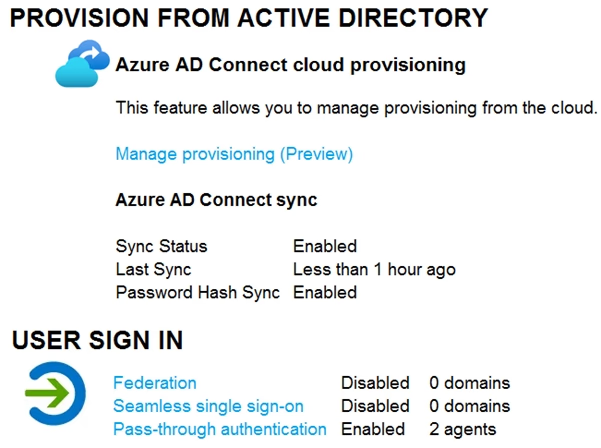Your network contains an on-premises Active Directory domain that syncs to an Azure Active Directory (Azure AD) tenant. The tenant contains the users shown in the following table.

All the users work remotely.
Azure AD Connect is configured in Azure AD as shown in the following exhibit.

Connectivity from the on-premises domain to the internet is lost.
Which users can sign in to Azure AD?